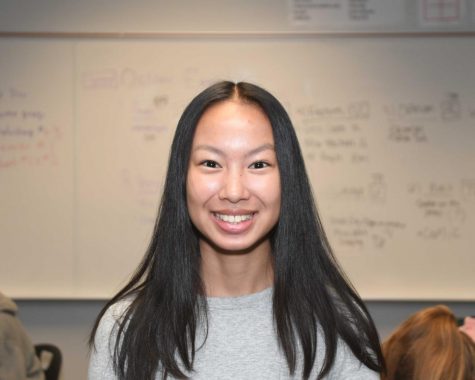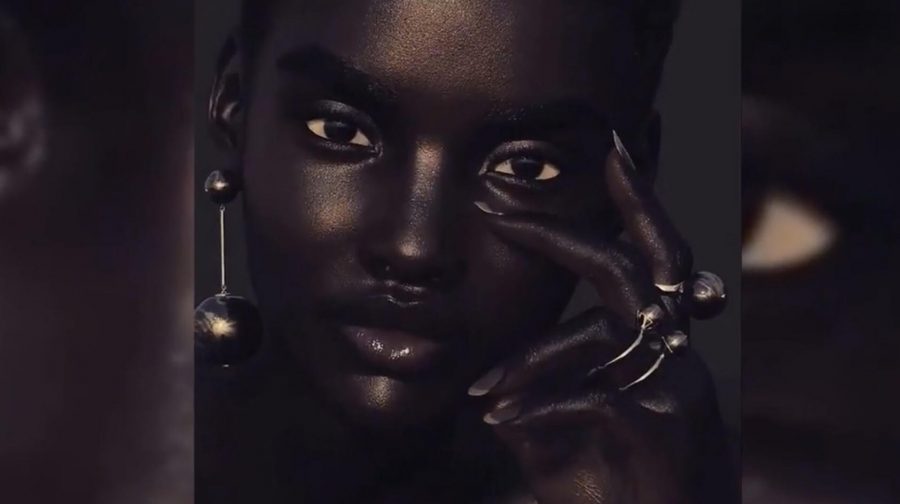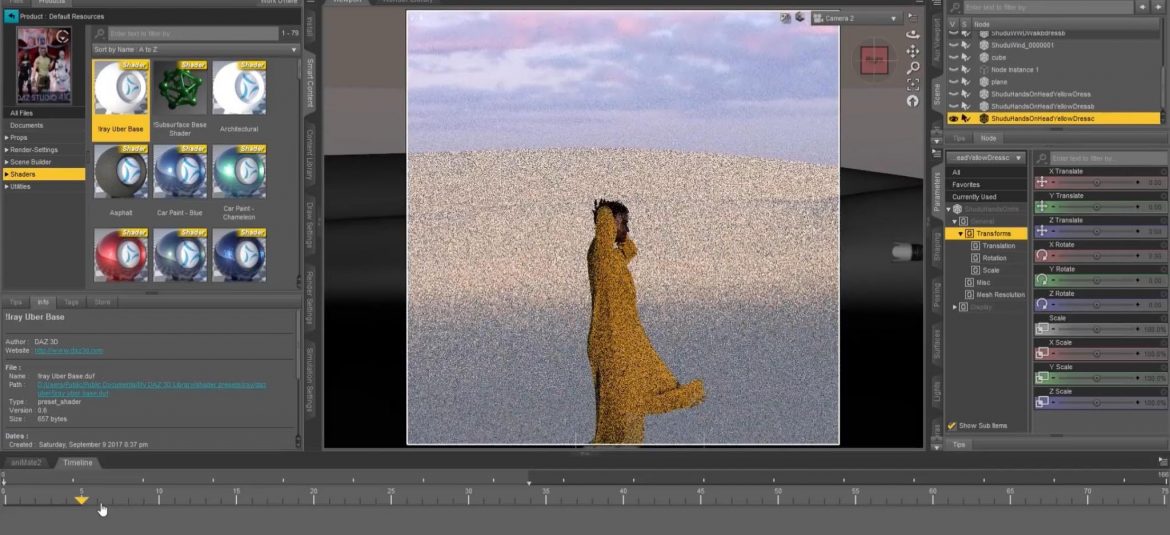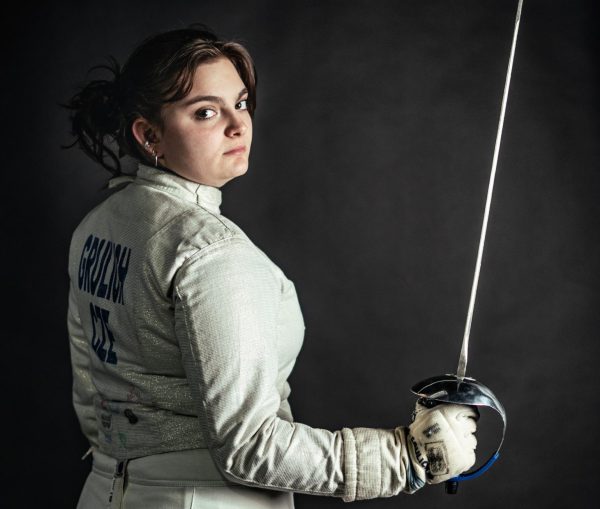Are digital models the future for fashion?
Shudu face image
Shudu, a popular model, is the epitome of beauty. Her stunning figure accentuates the fashionable clothing she models and attracts many clothing companies. Shudu’s social media platform highlights her impeccable photos, leaving fans in awe of her seemingly unreal beauty.
The only issue? Shudu, however human she may appear in photos, is simply a fabrication of the London-based photographer Cameron James-Wilson through the means of a computer. Shudu, a digital model created using a specialized program to make her appear life-like, challenges the beauty standard and creates an unprecedented way of viewing the complexities of modeling.
Shudu modeling Fenty Beauty lipstick
Courtesy of WWD
Wilson fully utilizes modern day’s advanced technology to create art like Shudu, channeling his creativity through designing her outfits and poses. He explains Shudu as a form of self-expression, creating something beautiful with art.
“Basically Shudu is my creation, she’s my art piece that I am working on at the moment,” Wilson said (Revelist).
Wilson describes the process of creating an image of Shudu as taking anywhere from a few days to a few weeks (Elle). To create an image of Shudu, Wilson first scans a real life person, this image used as a foundation to craft Shudu’s features. He then digitally edits her clothing and makeup.
In just two years, Shudu has gained an Instagram following of nearly 200 thousand followers and many supporters. When Shudu first started posting on Instagram, fans were captivated by her flawless image. However, once she was revealed as a computer generated model, many people experienced the feeling of the “uncanny valley”, the eerie feeling one gets when looking at an object almost life-like but not quite (Highsnobiety).
Some people think digital models aren’t effective and would like to look at a real person due to the digital model’s lack of a personality. Many times companies want to hire a model not just for their image but also for their reputation and unique personality, making people gravitate towards them, thus creating profit. Digital models are simply an image without real thoughts and emotions, severing any hope of connecting with their audience.
“I would rather see a real human, because they have feelings, they have emotions, [and] they have struggles that every other human has. Even if models have more money, you can still connect with them on a more real level than you can with a digital model,” sophomore Shaila Daniels said.
Conversely, many people would also say digital models can be effective if used in certain situations. Wilson hopes that digital models will spark interest in quickly advancing technology and the effect that has on the fashion industry.
“When brands book Shudu, they’re not booking her instead of a real model. They’re booking her because she’s a virtual model and they want to spark a discussion about technology in fashion,” Wilson explained (Elle).
Digital models are also impacting our beauty standards, in some ways more than others. Since digital models are literally unreal, is it dangerous to expose impressionable children and teenagers to their “fake” beauty? This kind of representation in the fashion and beauty industry could be detrimental to their mental health, as they might compare themselves to something they physically cannot achieve.
“If you see like a digital model, [you’re looking at] an ideal standard of beauty that nobody can attain because it’s fake,” junior Kristine Marek said.
A good amount of fashion companies already photoshop their models to perfection, so including a digital model would only add to the growing idea of an unrealistic beauty standard. However, despite the influx of Photoshop used for modeling today, many companies also recognize the imperative need to include models with all different body types, ethnicities and races, etc. Theology teacher Mr. Schulte worries that the creation of digital models would only detract from the growing importance of diversity.
“It’s kind of a step in the wrong direction,” Schulte said. However, Wilson views the inclusion of digital models into the beauty and fashion industry differently. Instead of taking away from the strides companies are making to include diverse models, he plans to use technology to fuel this idea. Wilson also views the modeling industry as lacking in representation, and he wants to use technology advancements for change (Highsnobiety).
“It is trying to add to the standard of beauty that’s being shifted to something much more inclusive,” Wilson stated (Highsnobiety).

Rosa Madden, a junior at Jesuit High School, is taking her first year of journalism this year. She’s excited to write articles for the paper and explore new topics such as the rules, norms, and trends at Jesuit. Taking a look at Jesuit’s sport’s teams and academic achievements as well as struggles also sounds interesting. Stepping back from everyday life, Rosa would also like to look at more national topics as well as global ones, too. At Jesuit, Rosa’s day is full of classes and extracurricular activities. Her favorite subject is English, even if it can be quite difficult at times! Aside from schoolwork, Rosa busies herself after-school with cross country, swimming, track, and various clubs. She likes feeling accomplished everyday, allowing her to be more productive while working on homework later in the night. When she’s not at school, Rosa loves to read, take pictures, play with her dog, and bake. She bakes mainly a lot of cookies and cakes, but she also likes to explore new recipes either passed down from her mom or looking them up on the internet. Another pastime of Rosa’s is participating in Girl Scouts. From working on the Gold Award to completing numerous journeys, Rosa plans to finish Girl Scouts through high school.











